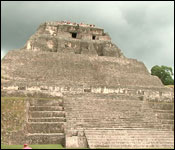
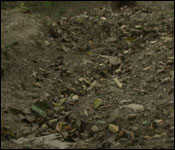
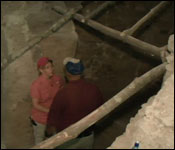
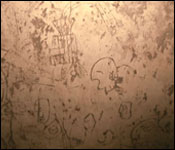
You might have thought you knew everything about the maya site of Xunantunich in San Jose Succotz, but for the past two nights, we’ve been showing you exciting new finds that have been made at that ancient city.Â
Well, The final part of the Xunantunich feature series focuses on the discovery of a scribal room at the El Castillo structure.
Archeologists were finally able to decode the graffiti on the walls of this room last week. Here’s what we saw:
The El Castillo structure stands 30 meters, or a hundred feet high at the south-eastern side of the central plaza. It is the second tallest building in Belize and it was once a palace that housed the royal Maya rulers of Xunantunich. While you can take in its grandeur on the ground level.
As you mount the steps, you truly appreciate its towering magnificence.
Texas Professor Dr. Katherine Brown has had 5 years to explore and embrace this site. But it’s only until 3 years ago that Brown and her students uncovered a secret stairway that led to this room. After extensive excavation, the walls and what was drawn and painted on them began to appear.
They might look like careless scribbles and sketches done by kids. But according to Dr. Brown these images were purposeful and artistic
Dr. Katherine Brown - Professor, University of Texas
"What we discovered was on this door jamb initially where some really beautifully executed incised images that some are more graffiti like and others are obviously rendered by an ancient artist or scribe. And this individual as you can see here is sort of a royal individual with diamonds and his head dress holding something out in front with a belt element hanging down. And this particular image would be something you would see similarly depicted on ceramic vessel, like an elite vessel."
But these ancient scribes didn’t just construct this room and randomly draw on these walls – it was precisely sectioned off:
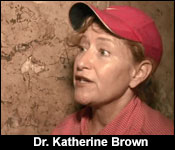 Dr. Katherine Brown - Professor, University of Texas
Dr. Katherine Brown - Professor, University of Texas
"The Maya inscribed panels like a register where they've cut here and here and here across the entire register of this room. It’s been incised into small registers here and in these registers there's individual types of iconography or carved images and this one over here particular is really interesting. You see a jaguar head carved into the stone and you see another jaguar head an exact replica of that jaguar head. Another exact replica, another one; this one isn't quite as well preserved but you can see that they were trying to repeat and tracing and basically learning how to write or incise these particular type of images."
The archaeologists are calling this room a Maya scribal academy. But the secret passageway leading into it, suggests that it was a sacred and highly restricted area.
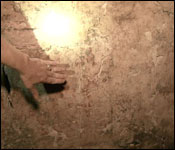
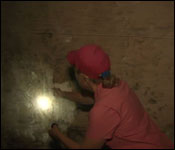 Courtney Weatherburne
Courtney Weatherburne
""Who were actually allowed to be in this space?"
Dr. Katherine Brown- Professor, University of Texas
"Well that's a really good question. At this point we don't know. What we do know is that the staircase was fairly narrow and the access way would not have been available for just anyone. Probably individuals were either living in the group behind the Castillo might have had access, could have come along on the pathway and the staircase or other individuals that probably were elites; elite individuals that had access to this particular room."
"I can envision that as scribe either lived or used this room and that people of elite teenagers or young adults would be coming up the secret staircase to learn about; to sort of gain that knowledge that scribal knowledge, to carry it on."
And Professor Brown and her team plan to carry on and conserve that knowledge through specialized photographic techniques.
Dr. Katherine Brown- Professor, University of Texas
"We are in the process of trying to document all of these incised elements as well as the painted elements as you see here, there's a painted portion of some kind of an individual down here. There is part of a glyph cartouche which would have been on the outer portion of the glyph and well as some painted elements in here that are not well preserved. With high photographic technique we'll be able to sort of pull out this image and get a better understanding of what this mural element looked like."
Apart from the images themselves, what is truly compelling is that this room holds the largest array of Maya graffiti ever found in Belize. But although archaeologists are unravelling more about Xunantunich through this scribal room, the sacred burial site and the panel, there is still so much to be found and researched.
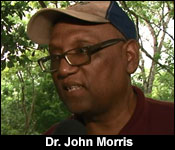 Dr. John Morris - Director, Institute of Archeology
Dr. John Morris - Director, Institute of Archeology
"Xunantunich is one of our premier sites that a lot of people come to visit. But it’s also a site that is ed enacted to us in fact that we don't really know the full story of the ancient Maya occupation at this. And so over the years we've been doing further excavation and reach trying to figure out what took place at Xunantunich."
Now the next long process that follows is the conservation of these discoveries. We spoke to Chief Conservator and he told us what that process entails and why it is important.Â
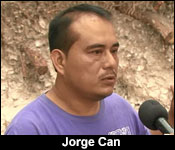
Jorge Can - Archaeologist Conservator
"We come and we do the conservation. Actually we do the planning, we do a profile, we do the lime drawing and then from there we move the stones and dismantle them. For example we have over there some of the stones that we come and reintegrate back again in the same place and the mortar we use the white lime with the white marl."
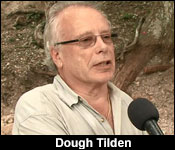
Dough Tilden - Independent Researcher
"When I come down it's both excavate and learn more about the Maya and hopefully contribute a little bit to our understanding but also to be able to conserve these buildings; so that helps particularly in tourism because I think tourism is the economic engine that both helps the country and helps the investigation of the Mayan heritage."
| 
